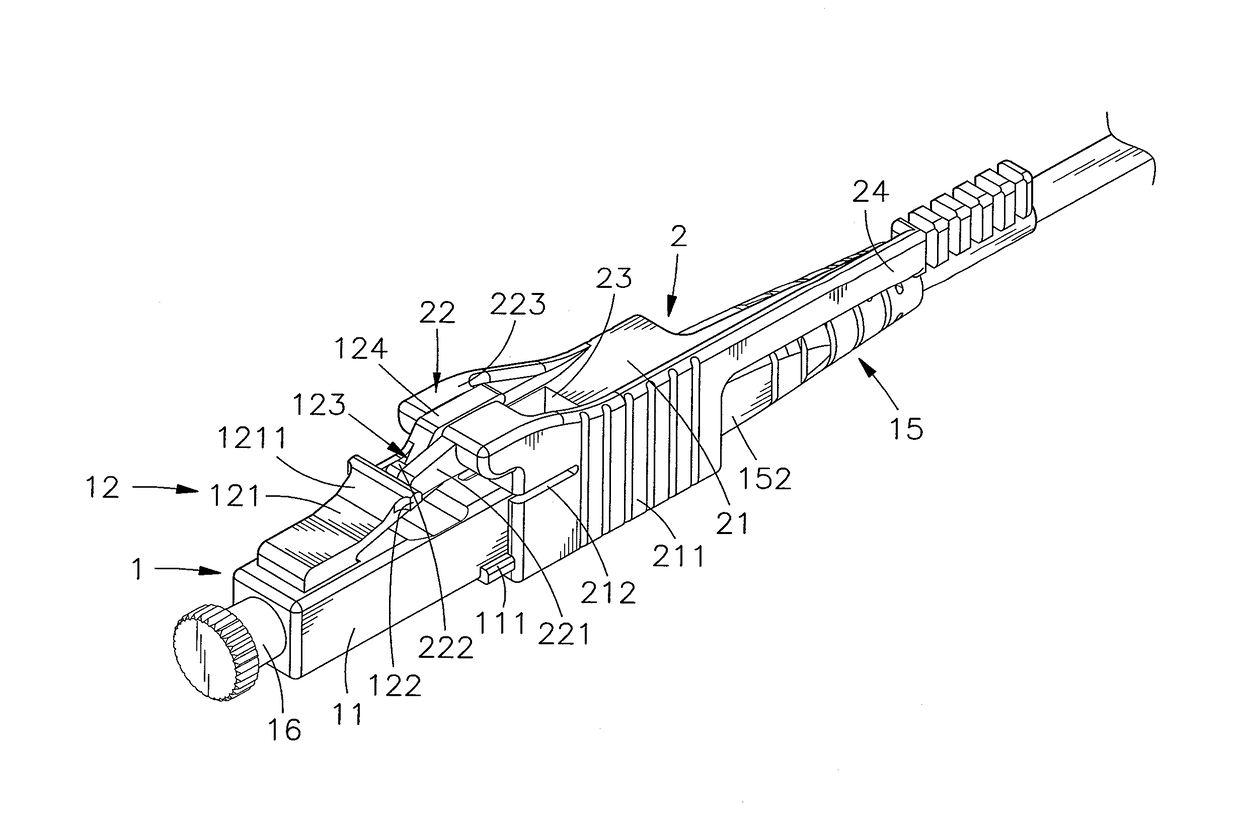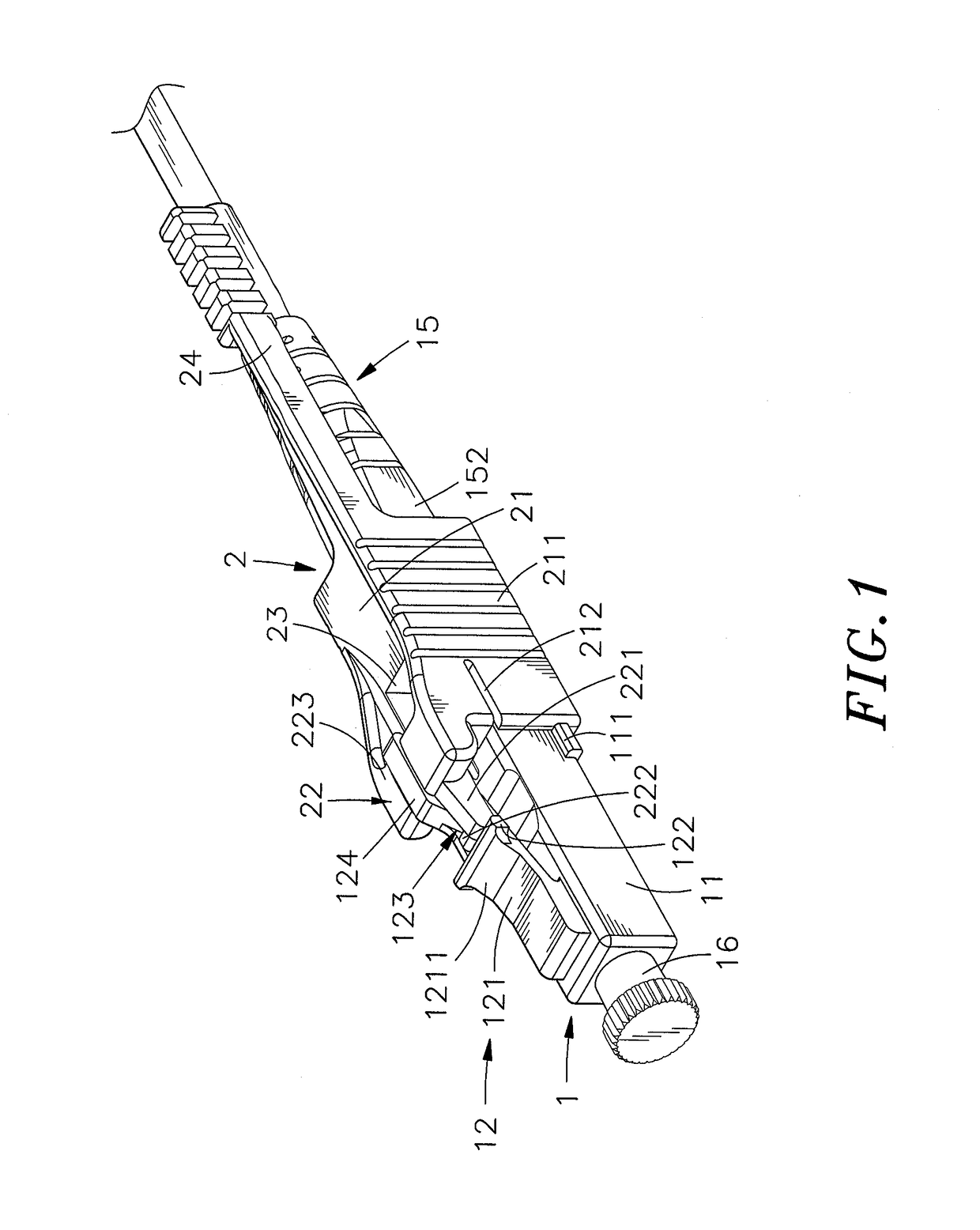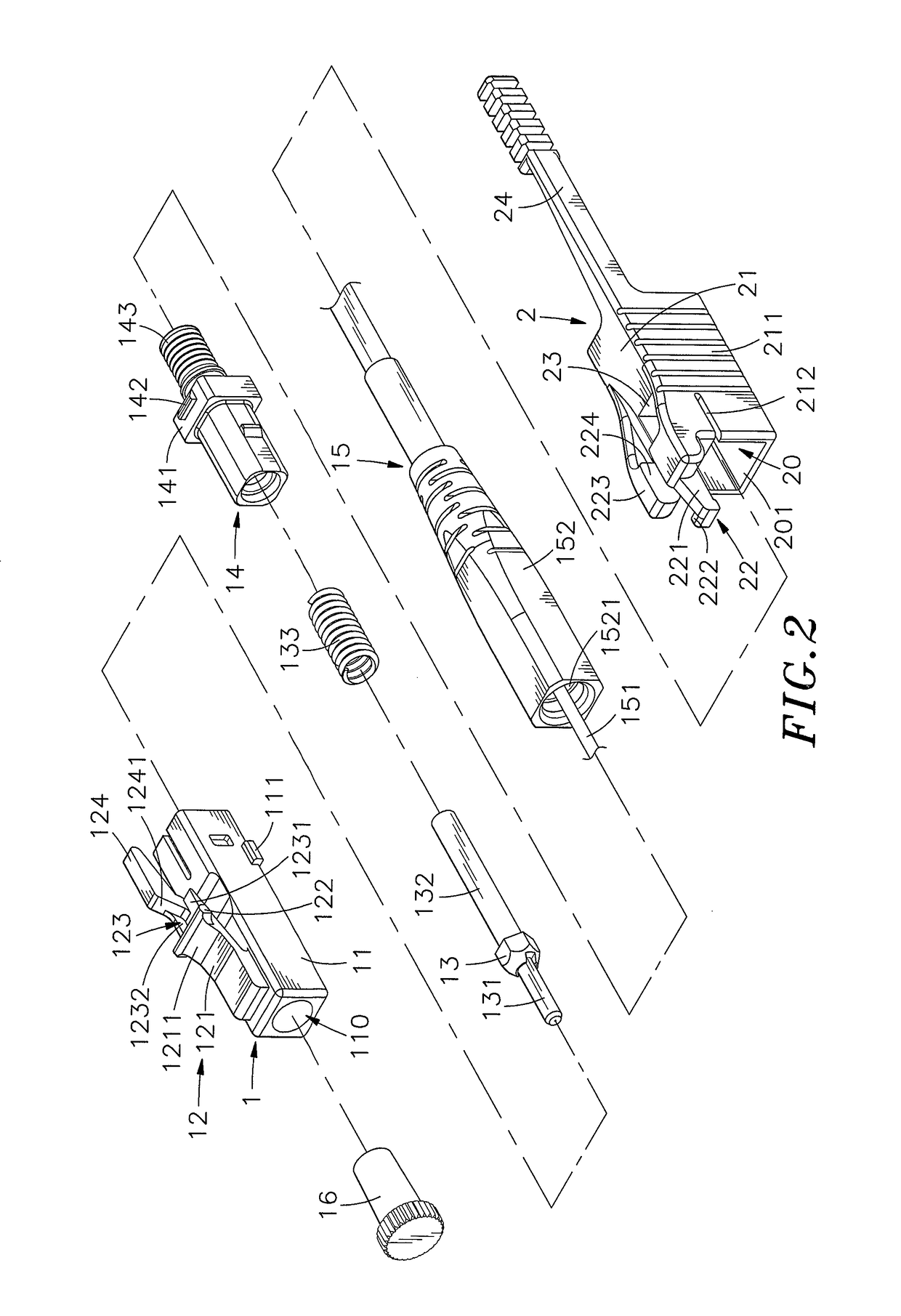Push-pull type fiber optic connector assembly
a fiber optic connector and push-pull technology, applied in the field of push-pull fiber optic connector assembly, can solve the problems of inconvenient finger access and unsatisfactory use of this design of supplementary tools, and achieve the effect of convenient single-hand operation and less effor
- Summary
- Abstract
- Description
- Claims
- Application Information
AI Technical Summary
Benefits of technology
Problems solved by technology
Method used
Image
Examples
Embodiment Construction
[0027]Referring to FIGS. 1-4, a push-pull type fiber optic connector assembly in accordance with the present invention is shown. The push-pull type fiber optic connector assembly comprises a fiber optic connector 1 and an operating handle 2.
[0028]The fiber optic connector 1 comprises a rectangular connector housing 11, a latch 12 suspending at a top side of the connector housing 11, a fiber ferrule 13, a connector sub assembly 14, and a fiber optic cable 15.
[0029]The latch 12 comprises an elastic arm 121 having an upwardly backward sloping top guide surface 1211, two coupling blocks 122 respectively protruded from two opposite lateral sides of the elastic arm 121, a recessed portion 123 located at a rear side of the top guide surface 1211, a wedge-shaped pressure rod 124 of width about ½ of the width of the elastic arm 121 backwardly extended from the recessed portion 123 and suspending above the elevation of the coupling blocks 122, a connection plate 1231 located at a bottom side ...
PUM
 Login to View More
Login to View More Abstract
Description
Claims
Application Information
 Login to View More
Login to View More - R&D
- Intellectual Property
- Life Sciences
- Materials
- Tech Scout
- Unparalleled Data Quality
- Higher Quality Content
- 60% Fewer Hallucinations
Browse by: Latest US Patents, China's latest patents, Technical Efficacy Thesaurus, Application Domain, Technology Topic, Popular Technical Reports.
© 2025 PatSnap. All rights reserved.Legal|Privacy policy|Modern Slavery Act Transparency Statement|Sitemap|About US| Contact US: help@patsnap.com



